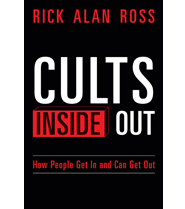How close did the Aum cult come to getting a nuclear bomb?
Published By admin
On March 20 this year, people in Tokyo observed the 30th anniversary of the doomsday cult Aum Supreme Truth’s nerve gas attack on the Tokyo subway system.
Writing in Shukan Shincho (May 15), reporter Koji Kiyota relates the Aum’s activities in the summer of 1993, the same year the cult succeeded in producing sarin, a toxic nerve gas formulated by German scientists at IG Farben in 1938.
Aum guru Shoko Asahara (aka Chizuo Matsumoto) had allegedly exhorted his minions to manufacture 70 tons of the substance, which in theory would have been sufficient to kill all 7 billion people (at the time) inhabiting the planet. As one means to this end, the cult had already procured a large military helicopter from the former Soviet Union.
It was also revealed that Asahara had directed the cult’s scientists to research development of nuclear weapons.
A key figure in the cult’s efforts to build up its military arsenal was Naruto Noda, a member of Aum’s “Ministry of Science and Technology” then headed by Hideo Murai.
“Around the start of 1993, discussions began about the possibility of developing a nuclear weapon,” related Noda, who completely broke off ties with the cult in 2009. “At first Asahara just asked us to look into it, but it was clear that he was serious about producing one.”
Ten years ago, Noda had spoken on the record about how a contingent of 20 high-ranking Aum members, including Asahara, traveled to Australia to look into mining uranium and developing a nuclear weapon. Kiyota finally followed up with a trip to Western Australia, where he met Mick Palmer, a former federal police official involved in the investigation.
Palmer recalled the kerfuffle that transpired when the Aum contingent arrived at Perth airport.
“We had been contacted following an incident at customs, but at that time we had no idea at all what Aum was,” said Palmer. “They’d stated the purpose of their visit was tourism”
For tourists, the Aum contingent were certainly carrying some bizarre items. Among them were containers labeled “hand soap” that upon testing were found to contain concentrated hydrochoric acid.
Also among their possessions were an electric power generator and two excavation machines packed in containers measuring two meters square.
The cultists were judged to be in violation of a number of customs restrictions and fined A$4,800.
It was later learned that Asahara’s group had chartered two light aircraft and set out for Banjarwan Station, in Australia’s remote interior about 700 kilometers northeast of Perth, where the cult had paid out the equivalent of 24 million Japanese yen to purchase a ranch.
The former owner of the ranch, Neil White, drove reporter Kiyota to a location about 20 minutes from the airfield, where he pointed out remnants of the cult’s presence, including a depression in the ground measuring three meters in diameter and one meter deep.
According to White, a number of foreign firms had previously conducted exploration for high-grade uranium ore in the area, and it appears that Aum’s scientists had also undertaken serious efforts to do so.
At the entrance to the ranch, a sign warns of danger. A one-story building, probably used to house construction workers, still stands. A video filmed back in 1995 showed a sign on the door that read “Toyoda Laboratory” — so named after Aum scientist Toru Toyoda, a former graduate student of physics at the elite University of Tokyo.
“Before the cultists left, they dug a large hole to conceal any evidence,” David Parkinson, a state police official assigned to counterterrorism, tells the reporter. “It appears that glass fragments found therein had been subjected to extremely high temperatures.”
Was Parkinson describing something similar to trinitite, the glassy greenish residue left on the desert floor after the Trinity nuclear bomb test in July 1945, near Alamogordo, New Mexico? Alas, the writer doesn’t say one way or the other.
Also found on the ranch were numerous sheep carcasses, which forensic tests revealed had been exposed to sarin. Unfortunately these revelations did not surface until Aum members released sarin with fatal results in Matsumoto, Nagano Prefecture in June 1994 and on a larger scale in Tokyo in March 1995.
“At that time, if proactive measures had been taken, the gassings might have been prevented,” says Shizue Takahashi, whose husband Kazumasa, the assistant stationmaster at Kasumigaseki Station, was among the 14 killed in the March 1995 subway attack.
Over 6,000 people were said to have been sickened to varying degrees by the gas, but because the day of the attack, March 20, was a Monday sandwiched between a weekend and a national holiday, subway commuters were fewer than usual — otherwise the number of casualties would almost certainly have been higher.
“People often say that the incident is fading from memory,” Takahashi tells the magazine. “I’ve heard that to my face, but I feel like saying, ‘So what?’ People’s memories will fade. But the legal team representing the victims are still fighting Aum’s successor groups.
“The emotional wounds and pain of the bereaved families and victims will never heal,” Takahashi continues, adding, “The matter of compensation payments to the victims by Aum’s successor groups, amounting to about 1 billion yen, remains unresolved.”
Content retrieved from: https://japantoday.com/category/features/kuchikomi/how-close-did-the-aum-cult-come-to-getting-a-nuclear-bomb.






